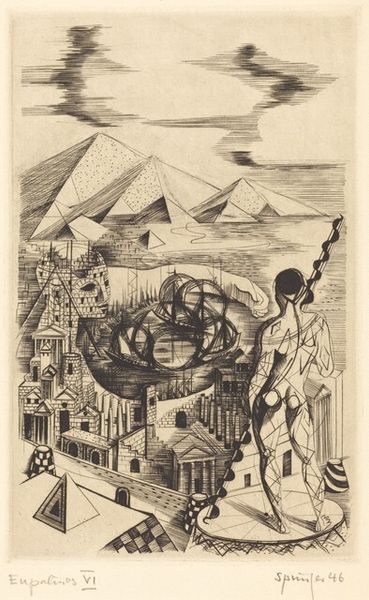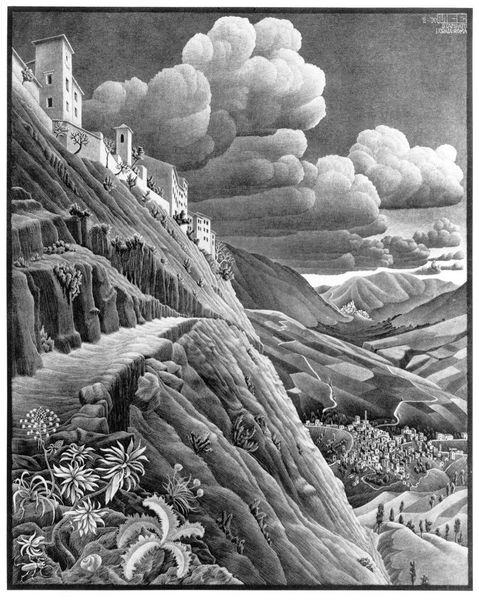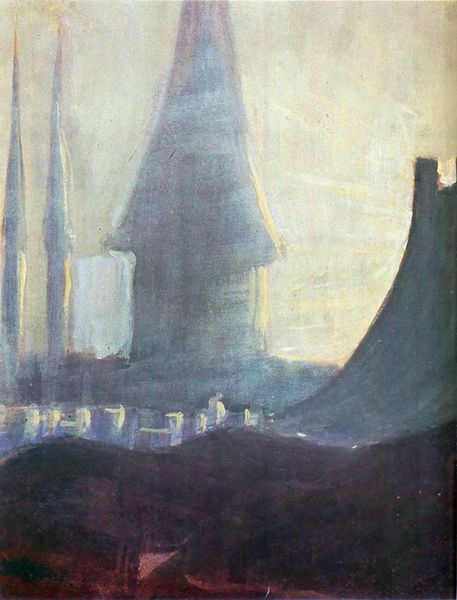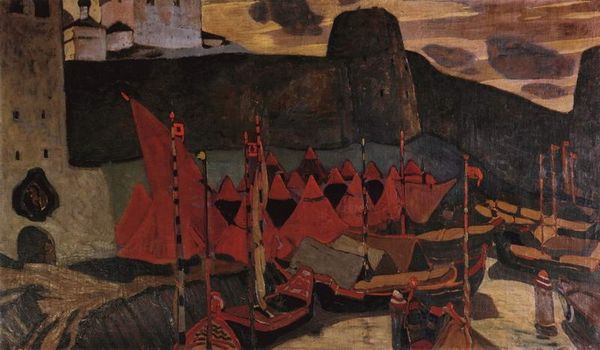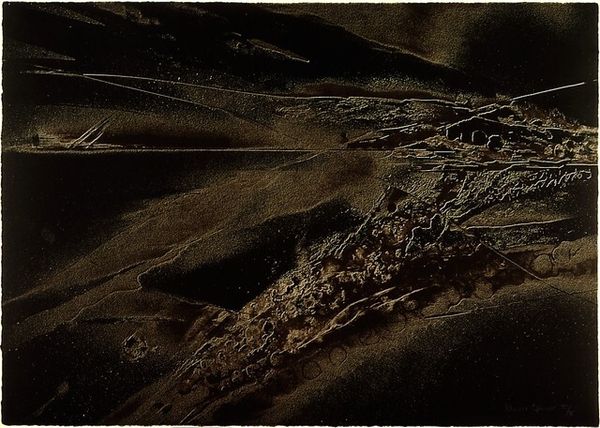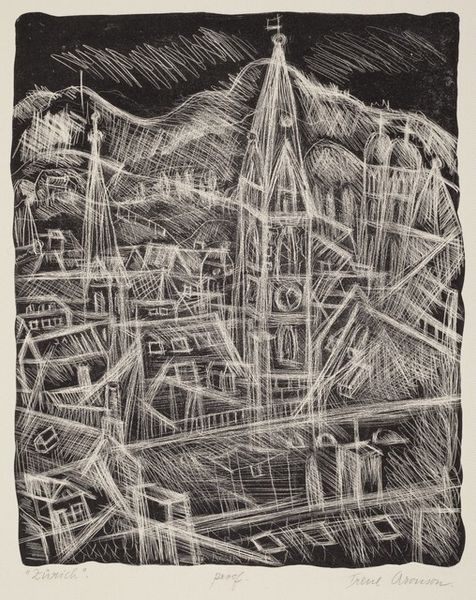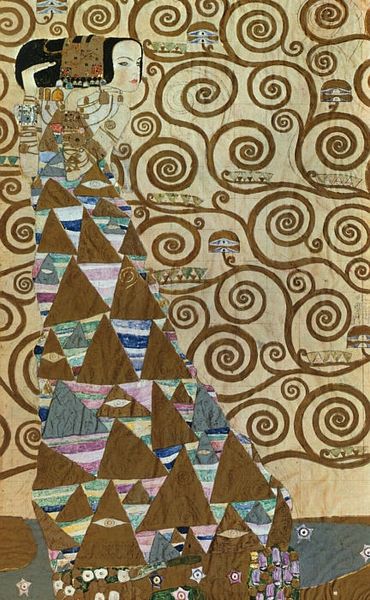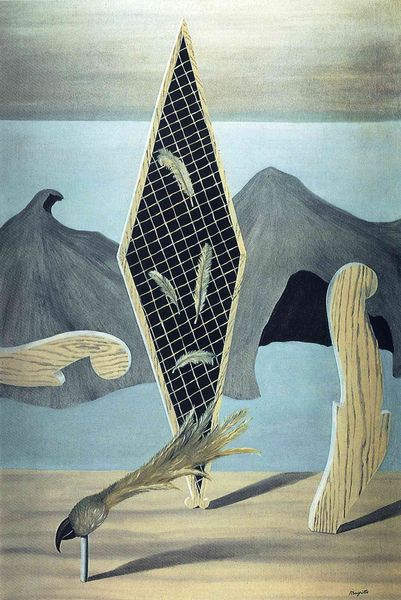
tempera, painting
#
allegories
#
art-nouveau
#
abstract painting
#
generative art
#
tempera
#
symbol
#
painting
#
impressionist painting style
#
landscape
#
impressionist landscape
#
geometric
#
figure in landscape
#
naive art
#
abstraction
#
symbolism
#
surrealist
Dimensions: 76.6 x 59.7 cm
Copyright: Public domain
Curator: Mikalojus Konstantinas Čiurlionis painted this intriguing piece, titled "Allegro (Sonata of the Pyramids)" in 1909. It employs tempera on cardboard. My immediate impression is a dreamlike landscape dominated by pyramidal structures, imbued with a rather somber, perhaps even slightly eerie, feeling. Editor: It's compelling, isn't it? The pyramidal forms arranged almost like a musical score resonate with the painting's title. Note the careful composition; how Čiurlionis guides the eye upwards through these geometric shapes. There’s a rhythmic progression that isn’t accidental. Curator: Agreed, and that rhythm has been read through his unique brand of Symbolism as mirroring the dynamism of his time—a period deeply interested in spiritual and theosophical movements, especially the reconstruction of social consciousness via his unique "musical paintings". Editor: Looking closely, observe how he uses light and shadow. Those radiant orbs atop many of the pyramids could be interpreted as symbolic beacons, illuminating an otherwise obscure landscape, acting as metaphors for revelation, spiritual awareness or collective political consciousness. Curator: Yes, but also let us examine the application of tempera itself. Čiurlionis’s handling, though precise in form, retains a soft, almost ethereal quality. The layering of colour and the gentle blending contribute to the overall atmosphere, the materiality seems intentional here. It distances the artwork from purely historical context. Editor: But surely you recognise, don't you, how this departs from prevailing Impressionistic ideals, in which paintings sought the experience of light rather than its metaphorical counterpart? He uses symbolic structure—the pyramids—to create social statements using new forms. Curator: Possibly, although I tend to think his focus stays on aesthetic, or even philosophical pursuits, rather than on directly referencing social structures or cultural criticisms. Even the use of flattened perspective serves to distance it further from the societal narratives. Editor: A fascinating point. Perhaps this speaks to the core challenge when viewing work with such strong ties to both a precise formal system, as you indicate, and an equally present commitment to change within society through forms of consciousness raising. Curator: Ultimately, regardless of which interpretive approach we favor, "Allegro" clearly invites us into a visual experience that stimulates aesthetic interpretation while prompting deeper reflection. Editor: Indeed, it showcases art's remarkable capability to speak in both structural terms and cultural whispers, encouraging the beholder to construct a conversation bridging subjective expression and external realities.
Comments
No comments
Be the first to comment and join the conversation on the ultimate creative platform.
